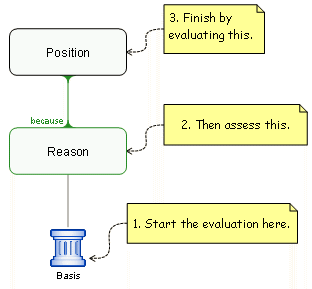The Science Of Scientific Writing Set 7 Set 7-Assessing • Second page • Third page • Fourth page • Example • Exercise 1 • Exercise 2 • Exercise 3 • Exercise 4 • Exercise 5 • Exercise 6 • Final Page Set 7.
OVERVIEW: The way to well-written science
PART I: Paragraphs and Sentences
SET A: Paragraphs: The Maps Behind Them
SET B: Paragraphs: Using Maps to Meet Readers' Expectations
SET C: Paragraphs with Something Extra: Points and Tails
SET D: The Generic Section: Expectations and Maps as Blueprints
SET E: Scientific Sections: The Methods and Results
SET F: Scientific Sections: The Discussion
SET G : Scientific Sections: The Introduction
SET H : Sentences
SET I : The Paper as a Whole
PART II: The Paper and its Sections
SET 1: Argument Parts
SET 2: Indicator Words
SET 4: Locating Arguments in Prose
SET 5: Rationale's Essay Planner
SET 6: Evidence in Arguments: Basis Boxes
Synthesis 1: Position-Early Paragraphs
Synthesis 2: Position-Final Paragraphs
Synthesis 3: Writing a Discussion I
Synthesis 4: Writing a Discussion II
We understand an argument by starting at the top and reading down. We evaluate a map by starting at the bottom of the map and working up:

Evaluation step-by-step:
1. The basis box: Is this a reliable source of information? Would you rate it as solid, shaky, or providing nil support?
2. The reason: What confidence do you have in this reason, given your assessment of its basis? Is it relevant to the position above? Would you rate it as providing strong, weak or nil support?
3. The position: What confidence do you have in the position, given the degree of support the reason provides? Would you accept it, reject it, or take no stand on it ('hmmm...')?
Content of this page drawn in whole or part from the Austhink Rationale Exercises with permission from Austhink.